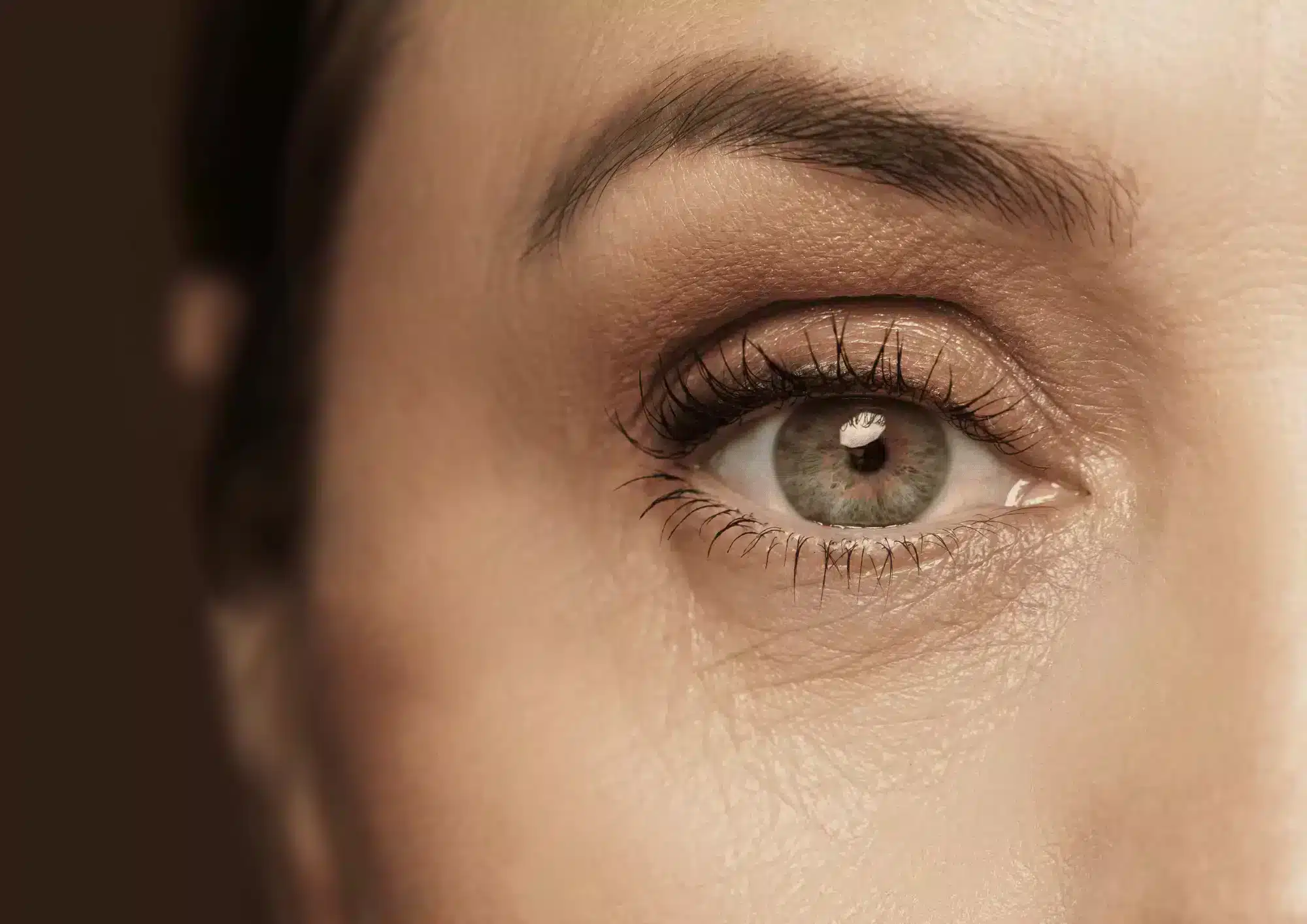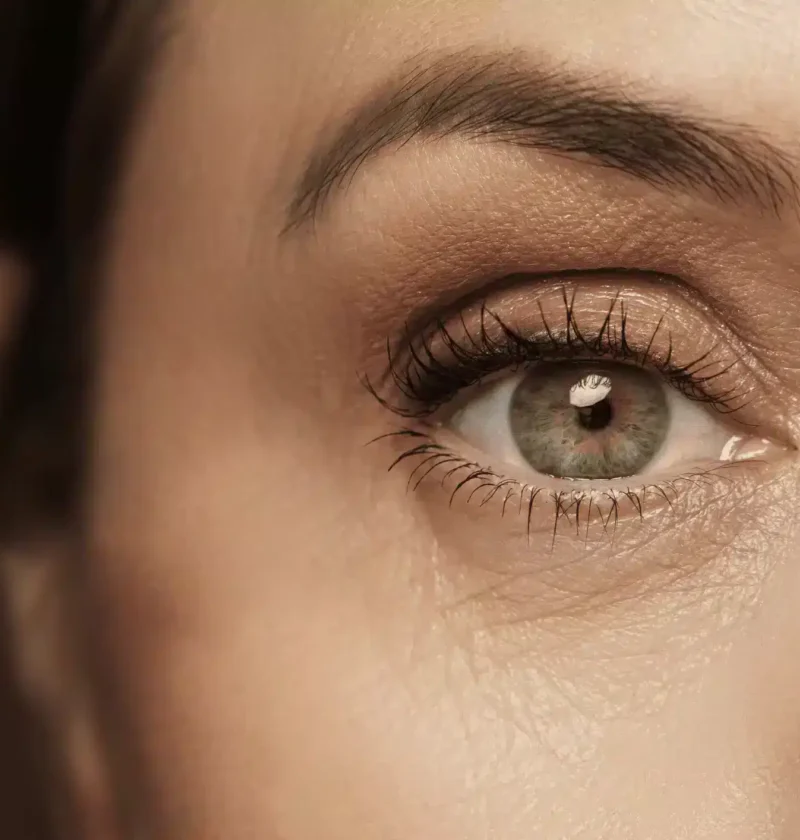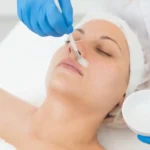
Juvederm is one of the most successful treatments for under the eyes concerns. Cosmetic concerns around the eye area are usually wrinkles and bags.
What causes under eye bags?
Like the rest of the skin and body, the area under the eyes is also susceptible to the signs of aging. Due to the process of aging, important structural tissues in the eye area weaken, including muscles that support the eyelids. Fluid and fat may then relocate and accumulate in areas such as the lower eyelids or below the eyes, causing puffiness and swelling. The swelling, sagginess, or loose skin, as well as the dark hollowness that appear under the eyes are all what are considered under-eye bags. While these symptoms can be worsened by factors such as lack of sleep, increased fluid retention, allergies, or lifestyle choices such as smoking, the main causes for under-eyes bags are aging and heredity.
How can Juvederm help treat wrinkles under the eyes and bags?
While surgery is an option in some cases to correct under-eye bags with a procedure called blepharoplasty, dermal filler treatment with fillers such as Juvederm is also a popular choice. Juvederm is a hyaluronic acid filler that helps to fill in hollows within the skin to provide lost volume and hydration. When used under the eyes, Juvederm can help create a firmer, rejuvenated look to the skin while also improving skin tone. Juvederm offers soft, natural-looking results that smooth depressions in the area and correct the dark shadowing caused by these indentations.
What are some of the risks associated with Juvederm treatments for under the eye area
Dermal filler injection treatment is a medical procedure, and like all medical procedures, it does come with a bit of risk. Due to the sensitivity of the area, under-eye correction can come with more severe risks.
Possible side effects of using Juvederm under the eye include:
Scars, bruising, swelling and although rare blindness. Blindness is very rare, and only occurs if an improper technique is used and the filler is injected into a blood vessel. This may results in scarring of the skin, or blindness if this error affects the eyes.
The most common inconvenience is obtaining an irregular or uneven result between the 2 under-eye areas. The under-eye area is trickier to treat as it requires deeper injection than many other areas, requiring the filler to be implanted near the bone. As such, the medical professional administering the filler injections must have an extensive knowledge of the underlying anatomy of this area of the face.
Hyaluronic acid contained in Juvederm injections can be dissolved by using Hyaluronidase
The good news is if uneven results come out of injection Juvederm under the eye, its active ingredien hyaluronic acid can be dissolved using an enzyme called hyaluronidase. If a patient is experiencing sharp pain, or a purple, lacy appearance in the injection site then they should contact a medical professional immediately to have the filler dissolved. They can also have the filler dissolved in the event of an irregular correction. The most important factor is that patients seek an experience, knowledgeable, and reputable doctor to perform the under-eye filler procedure.
Aesthetic medicine products are developed and regulated to meet stringent safety and efficacy standards. They are typically administered by trained healthcare professionals such as dermatologists, plastic surgeons, and specialized nurses in clinical settings. These products aim to provide effective solutions for cosmetic enhancement, skin rejuvenation, and overall aesthetic improvement, contributing to both physical appearance and self-confidence.
Key categories of aesthetic medicine products include:
-
Injectables: This category includes products such as dermal fillers, botulinum toxins (e.g., Botox), and collagen stimulators. These injectables are used to smooth wrinkles, add volume, and improve facial contours.
-
Skin Rejuvenation Treatments: Products like chemical peels, microdermabrasion systems, and laser devices are used to improve skin texture, reduce pigmentation irregularities, and enhance overall skin tone.
-
Skincare Products: These include medical-grade cleansers, moisturizers, serums, and topical treatments containing active ingredients like retinoids, antioxidants, and growth factors. They are formulated to address specific skin concerns such as acne, aging, and hyperpigmentation.
-
Hair Restoration Products: Medical treatments and products designed to promote hair growth and treat conditions such as male and female pattern baldness.
-
Body Contouring and Fat Reduction: Devices and products used for non-surgical body sculpting, such as cryolipolysis (cool sculpting) devices and injectable lipolytics.
-
Cosmeceuticals: High-performance skincare products that bridge the gap between cosmetics and pharmaceuticals, often containing potent ingredients with proven clinical benefits.
-
Wound Care and Scar Management: Products like silicone sheets, gels, and advanced wound dressings used to improve healing and reduce the appearance of scars.





